Stirling Mine – Commander Mine – Nacmine Alberta
Abandoned in the 1950s, many old and decrepit coal cars can be seen scattered about the forgotten Commander Mine site (earlier the Stirling Mine) near Nacmine Alberta. Exposed to the elements, rot and rust are slowly taking over. Tossed aside when the mine closed, they fittingly sit atop the old slack dump resting on waste material that these very cars may have transported. When the operation closed I suppose they were of no value to salvagers.
Outside of the coal cars there is little in the way of evidence to indicate that a mine was even here. Unless you look hard that is. Walking about one begins to piece things together. There are the coal cars of course, but there is also that waste dump, a tram tower, odd foundations and bits of steel. Not much, but enough.
The first operation established here was called the Stirling Mine (sometimes spelled Sterling), dating from 1914. The owners where (who else) the Stirling Coal Company who continued to run the mine for roughly the next twenty years. Based upon photos this author has seen of the mine at that time, it appears it was a rather modest operation during this period. There was a small tipple and hoist and a single railway loading track.
The tracks that passed the mine belonged to the CPR’s Langdon Subdivision, a branch coming in from its namesake town, built into the Red Deer River Valley to tap the vast coal deposits located in the area. This line came through in the early 1920s although before that date there was certainly tracks leading to the mine, clearly seen in pictures from its early days. It’s assumed this was a stub track off the nearby CNR line which came through here around 1914. When the CPR line came through, who owned the tracks then? Or did the two railways share this section of track, as they did elsewhere in the cramped valley?
The rail line passing here was abandoned in the late 1970s/early 1980s (conflicting reports).
In 1937 the mine was taken over by the Commander Coal Company, and shortly after its named was changed to reflect that. It was then the Commander Mine, a name proudly displayed on the tipple near the Drumheller to Nacmine road.
In spite of this change of ownership, the mine appears to have remained a modest operation as before. Later on during the height of World War Two, it was greatly expanded upon and a new tipple and hoist installed. Clearly output was increased due to heavy wartime demand. Instead of a single rail car loading track, there was now four, each track being used to load a specific size of coal (Coal was sized according to it’s intended purpose – for example “stove coal” was suitable for home cooking use).
Coal was loaded into boxcars which was typical for the time. Loading would be by a conveyor system but to unload at the customer’s end they typically would hand shovel it – wow a lots of work and so dirty!
The mine continued to operate until 1956 when it was closed and abandoned. Presumably most of the machinery and such was salvaged then. From 1949 until closing it was owned by Century Coals. This company ran one other mine in the valley, the very last coal mine in the region in fact and the only one still standing today. Known as the Historic Atlas Mine, it’s a museum you can visit.
Most of the output from mines in the valley was intended for domestic use (heating and cooking) and it’s likely the Stirling/Commander Mine was no different in this respect. It was very common for households to use coal but that market dried up in the 1950s when many converted to natural gas. Even so coal continued to be used as a domestic fuel into the 1960s and even the 1970s on a smaller and smaller scale and a few mines in the valley hung on to serve that shrinking market.
Exploring the site, the first thing we see are grassy mounds. Initially they look like natural terraces but on closer inspection they are clearly the mine dump. This is where all the undesirable material would be dumped – tiny coal pieces – waste rock – slate – clay – that was mixed with the coal.
This slack as it was called, was transported from the tipple and wash plant by way of a cable tramway and remarkably one of its towers still stands. The reason we know it’s the waste dump is that someone has dug into the piles, exposing the material under the vegetation. It’s not clear why they excavated here. The scars however confirm the presence of slack and this includes the always present orange shale that is seen at every mine dump in the region.
On top of the slack piles the coal cars are scattered about. Some appear to be tossed here and there and others are lined up in an orderly fashion. There must be a couple dozens at least.
These are fairly typical coal cars for the area based up others we seen at other old mine sites in the area. They are low profile which reflect the thin seams that exists in the valley, some as small as a metre or so (a thin coal seams means a low tunnels, hence the need for low profile cars). In other areas of the province seams this thin would be uneconomical to mine, but not here I guess.
Many coal mines used rotary dumping to empty the cars but here they used an end dump setup instead. The car was tilted sharply, an arm grabbing one end of it that pivoted up on hinges, allowing the coal to flow out.
The coal cars themselves were simple affairs, with steel wheels and framing. The body was of wood which could be easily replaced as it wore down from use. They used a simple chain coupling system with large metal bumpers to adsorb any run-in slack action. Hooking and unhooking them must have been a dangerous operation – watch those fingers!
Given the hard use they would get, the mine’s workshops must have been kept busy fixing and rebuilding these cars. In some pictures form the 1940s, some of these exact cars can be seen at the surface presumably waiting to be repaired. Outside of dumping and repair, they rarely saw the light of day.
These cars could easily date from the 1920s or perhaps even earlier. They could also be newer, perhaps dating from the time the mine was expanded around World War Two.
Heading down from the car dump the metal remains of something is seen, perhaps a section of the wash pant or tipple. A large bull wheel sits on its side not far away. This was the main pulley for the hoist and pictures from the 1940s clearly show a number wheels looking exactly like this at the top of the head frame (plus one on the ground – maybe a spare?).
Also located here were a number of foundations and such, including what is presumed to be the sealed mine entrance, covered with a cap of concrete. I did not venture there as it had been raining heavily making that low lying area a quagmire of mud. Slick, gooey, heavy Drumheller mud.
Based on overall output, this mine was one of the larger producers in the valley (most production post 1940) and it was certainly long lived.
Visiting this site is dangerous and I would not recommend it. There are lots of sinkholes and lost of sharp metal bits under foot.
In the 1990s I visited the site (mistakenly identified as the Nacmine Mine, now fixed) and to see those reports, click the links below.
Commander Mine Nacmine.
Abandoned coal mine cars.
To see some other coal mine related articles, follow these links…
Bow City coal and Kitsim Siding.
Ing’s Mine.
If you wish more information about this place, by all means contact us!
Date: May, 2013.
Location: Nacmine, AB.
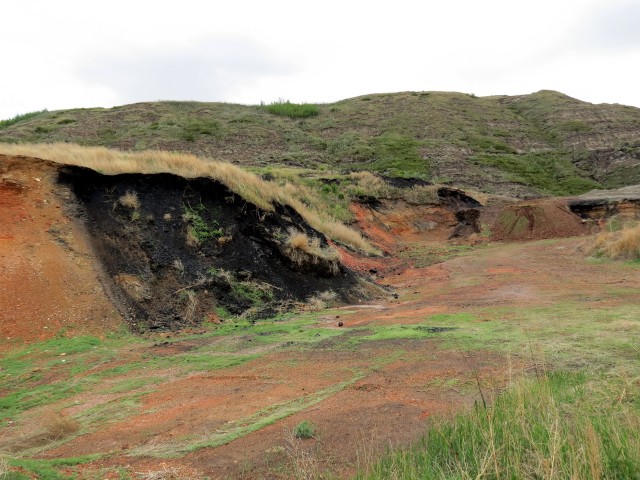
The waste dumps at the former Commander Mine.
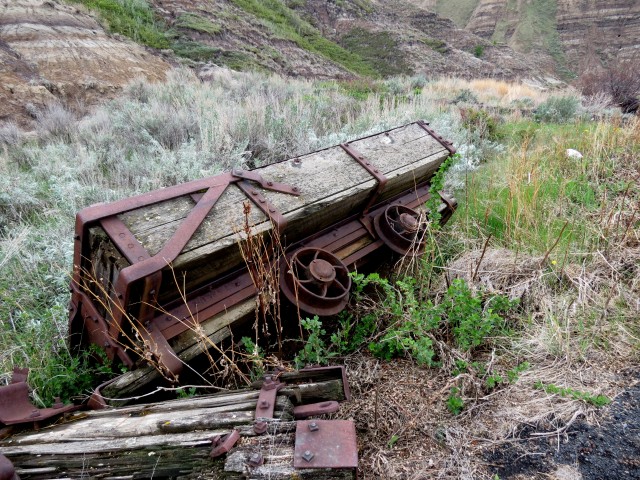
There are dozens of coal cars scattered about.
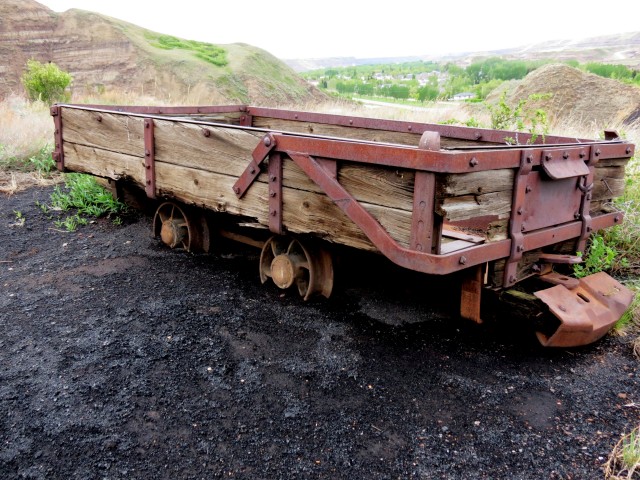
It’s curious why these weren’t salvaged when the mine closed. There is a fair amount of steel in them.
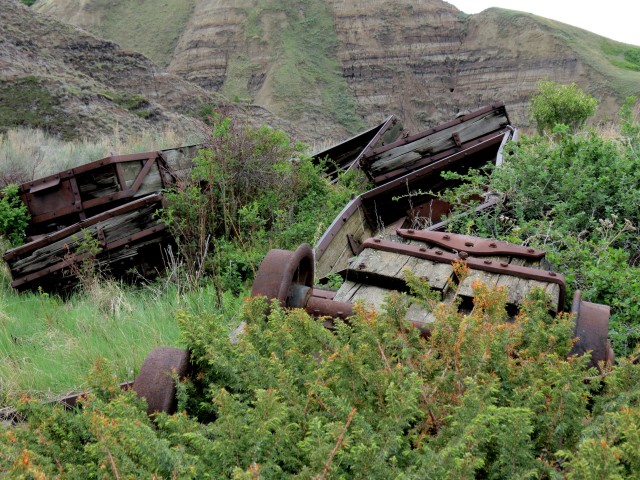
The mine is located between Nacmine and Kneehill junction.
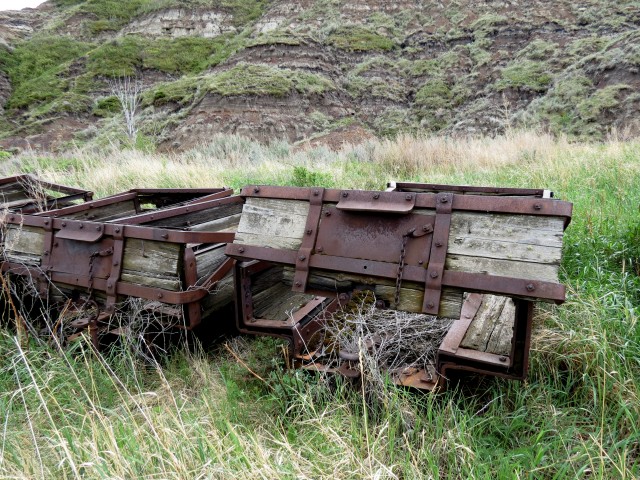
These cars are end dumped – note the hinged bulkhead.
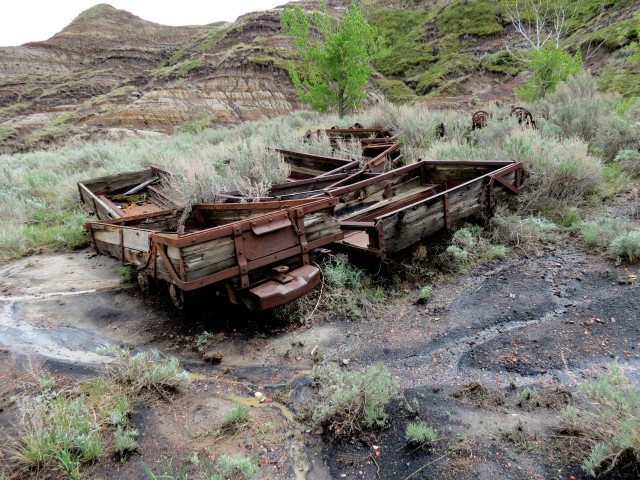
Before it was called the Commander, it was known as the Stirling Mine.
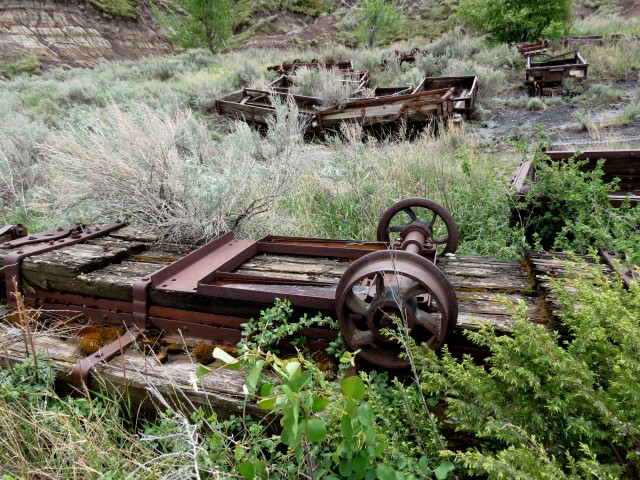
These cars could be eighty or ninety years old.
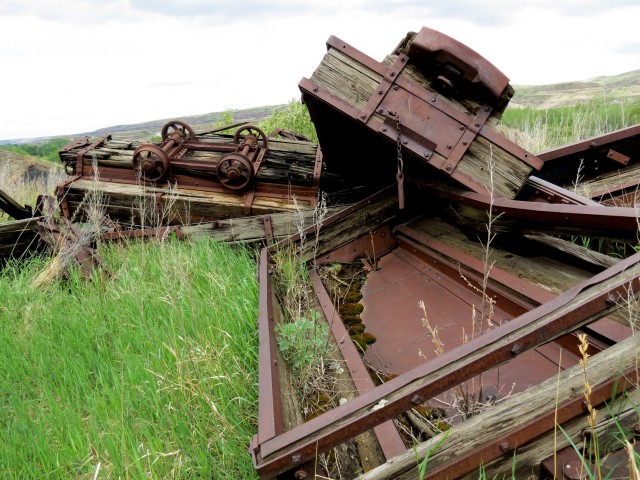
Mine cars like this were simple and rugged.
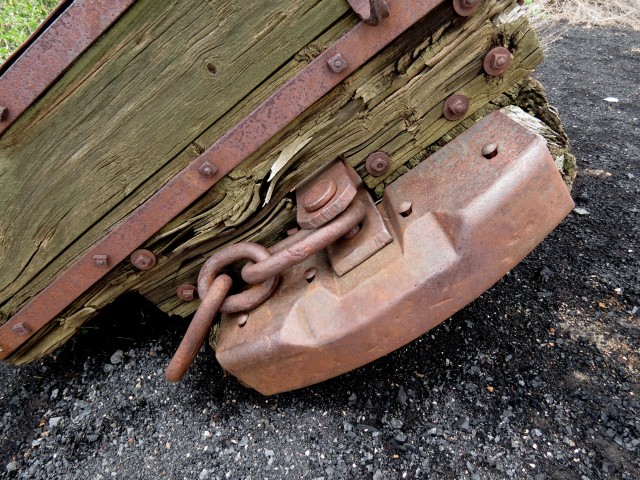
The cars were chained together and these large “bumpers” adsorbed any run-in slack action.
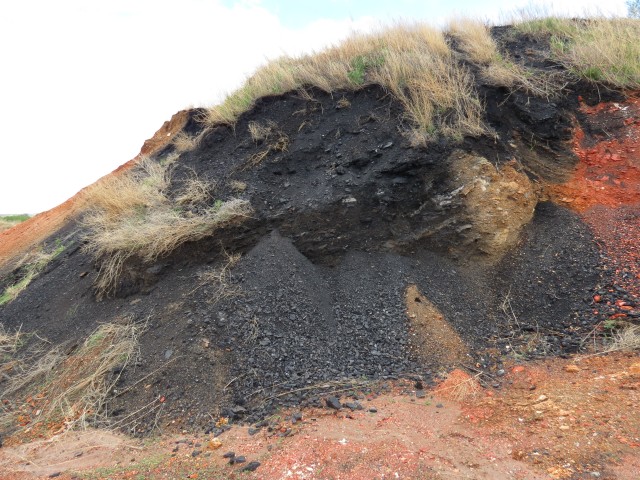
The dump is composed of slack (fine coal), slate, the orange stuff, and other waste.
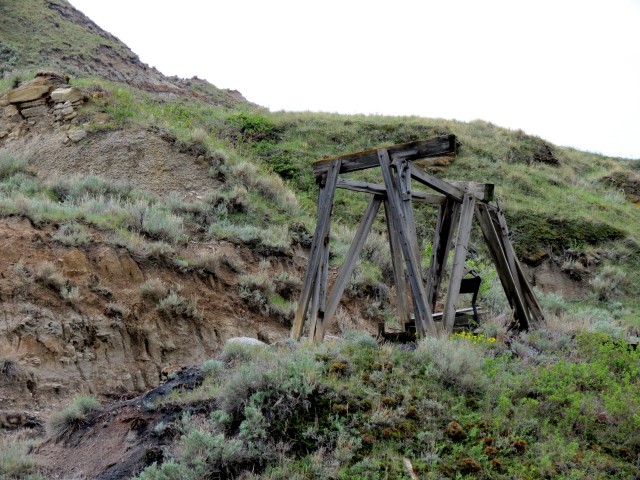
The remains of a tram tower near the waste dump.
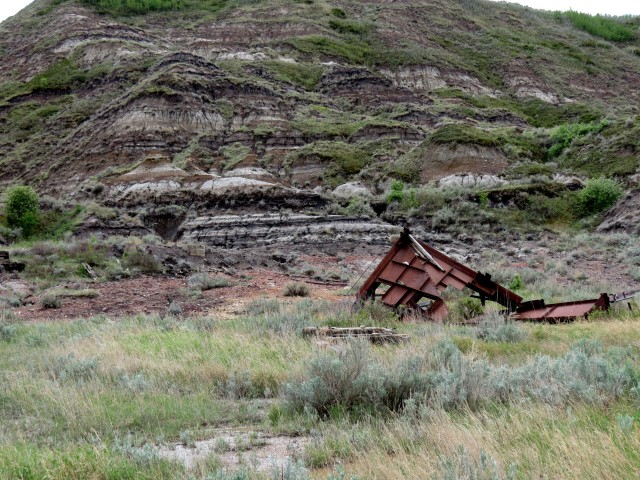
Perhaps remains of the tipple, and barely seen in back, the bull wheel from the hoist.

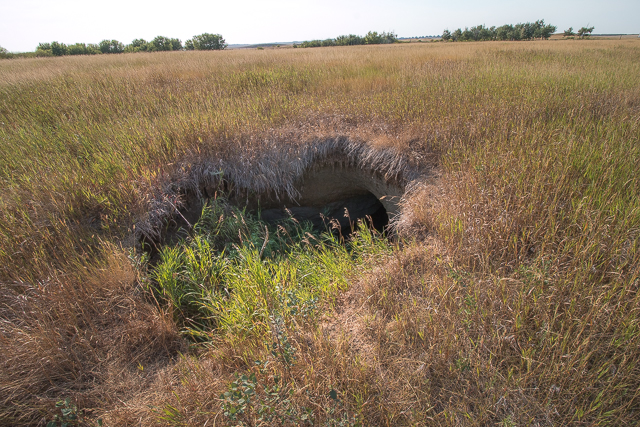
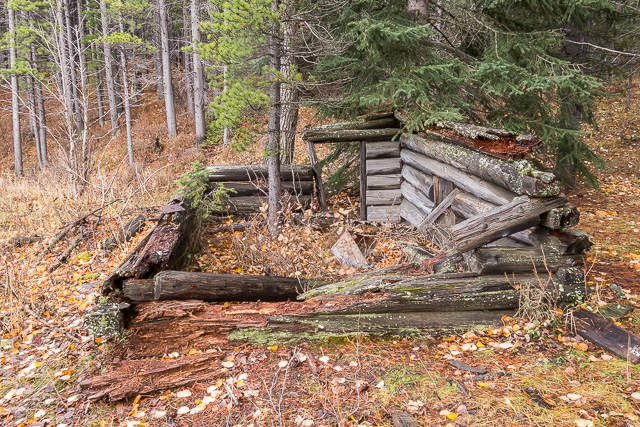
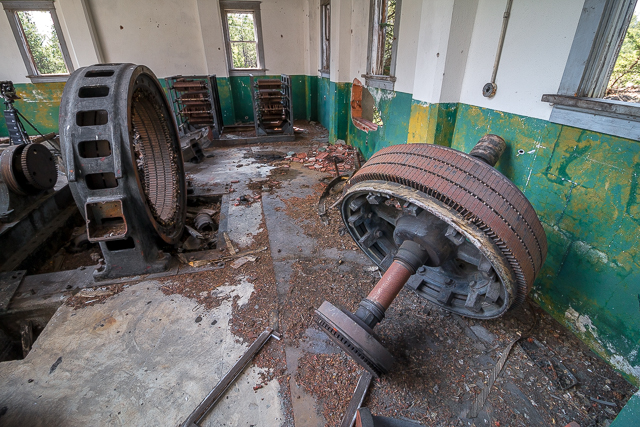
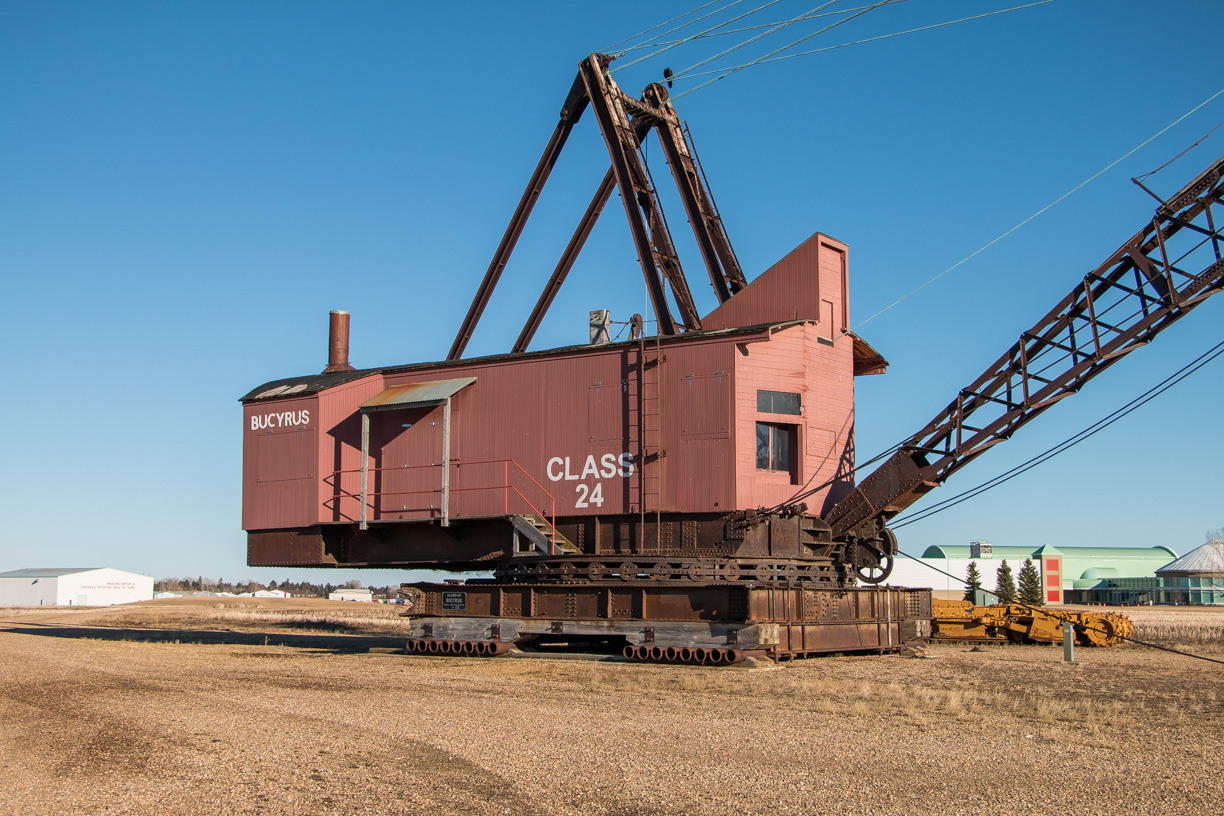
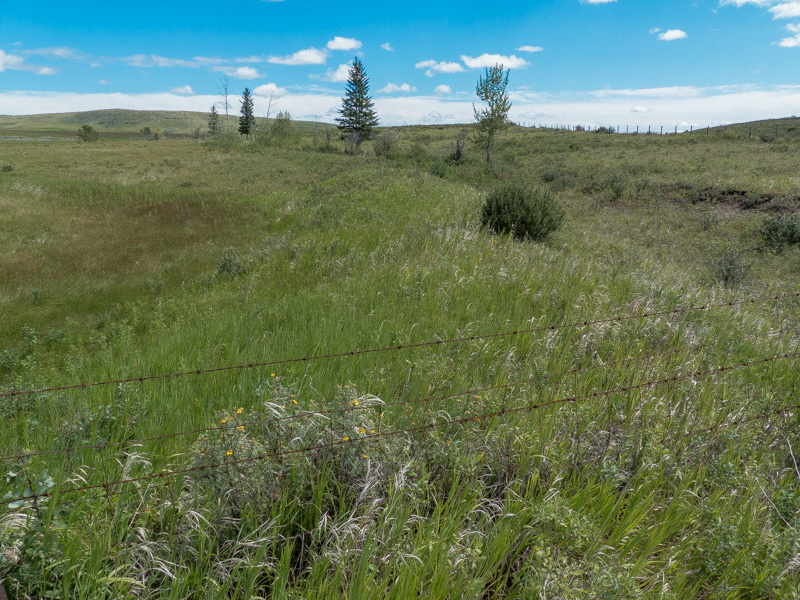
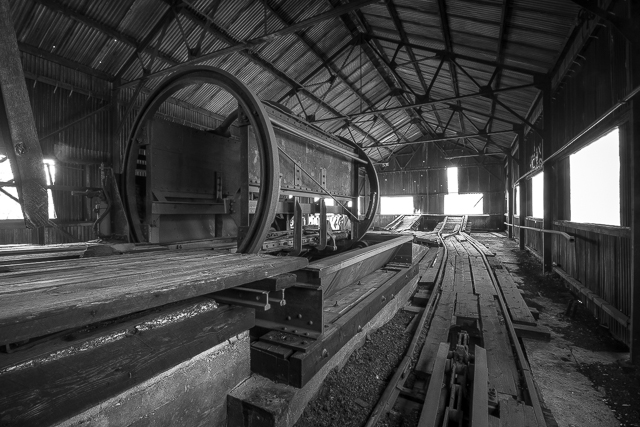
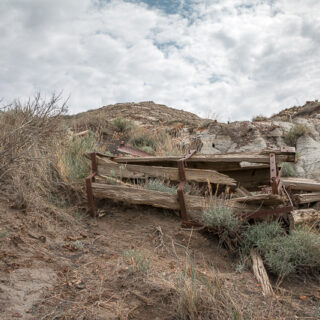
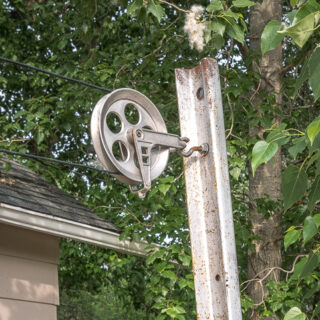
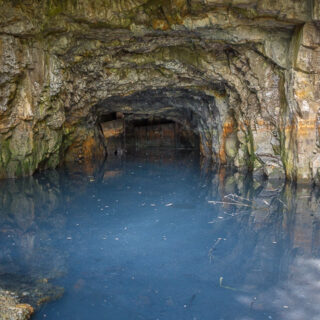
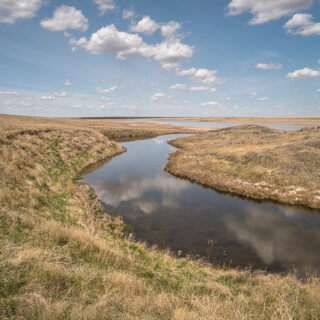
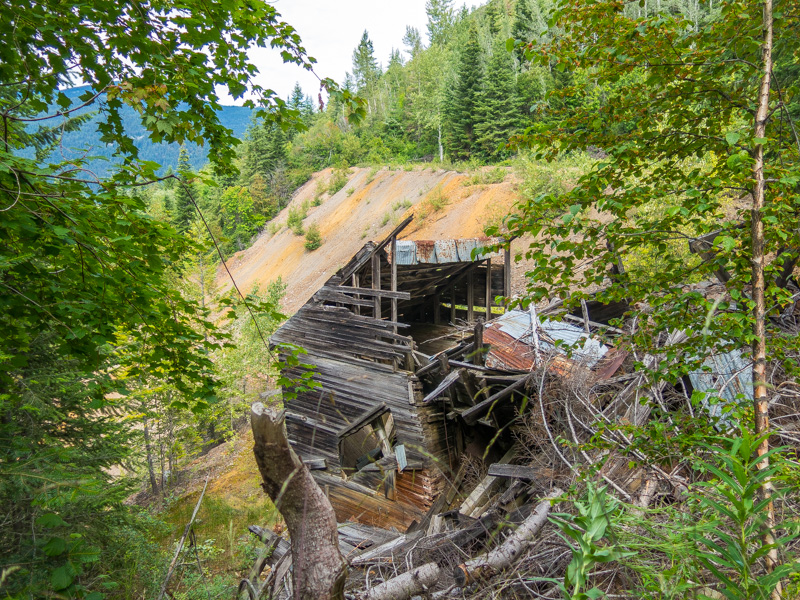
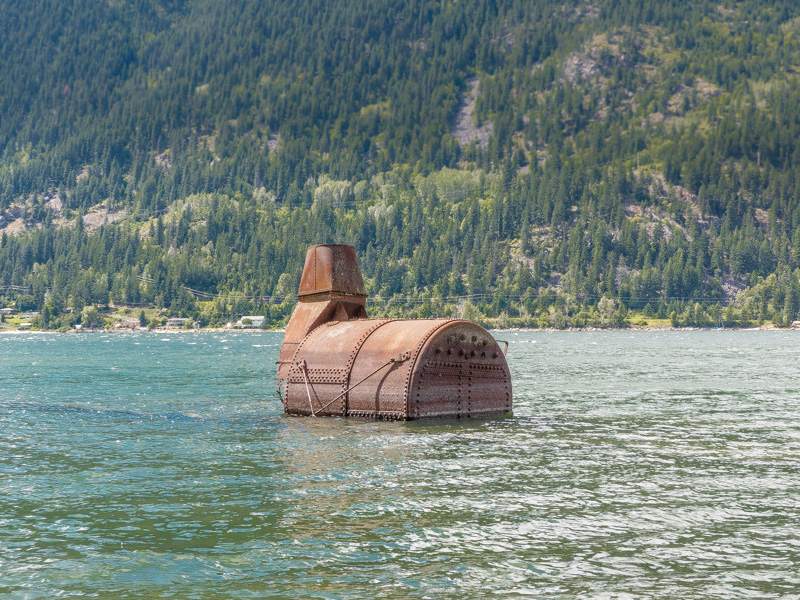
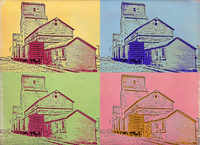






Wow, this is amazing. How do you find all this stuff?
As we always say, it is what we do. We’re pros.
Love it! Great find!
I’ll have to check this place out!
Amazing pics. It’s hard to believe these have been sitting out on the open for over fifty years! Coal cars used in the valley sure were small. I heard the seams were pretty thin there.
Yes, it’s surprising they have lasted this long and some of the wheels spun quite easily! The seams in the valley were indeed thin and according to the book “The Valley of the Dinsours, its Families and Coal Mines”, some worked seams were as thin as a foot and a half (aprrox 0.5 metre). Wow! Most however were more 1-2m thick. The coal cars had to be low profile and of small capacity due to the cramped conditions of the mine, as a result to those thin seams.
I LIVE in Nacmine and have never heard of this mine! I recall Red Deer River Coal at the west end of town near the grain elevator but not this one. Amazing the things you learn about the very community you live in!
The Monarch Mine was also a fairly big operation, open in the 1930-40s and located about half way between the Commander Mine and Red Deer Valley Coal. The Monarch is not to be confused with the Western Monarch Mine which is oddly east of Nacmine in East Coulee.